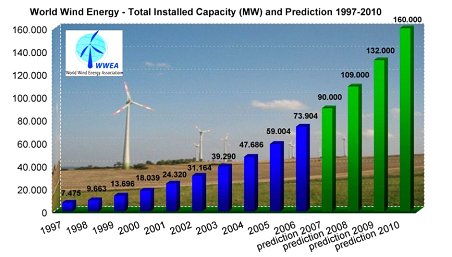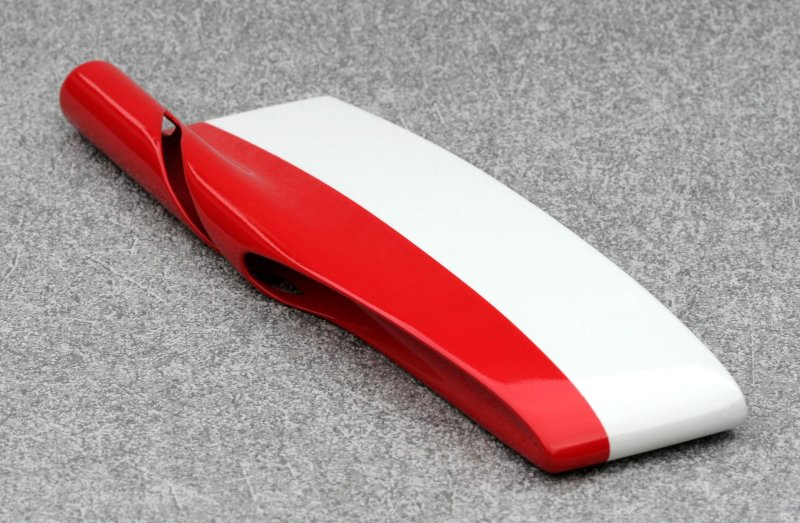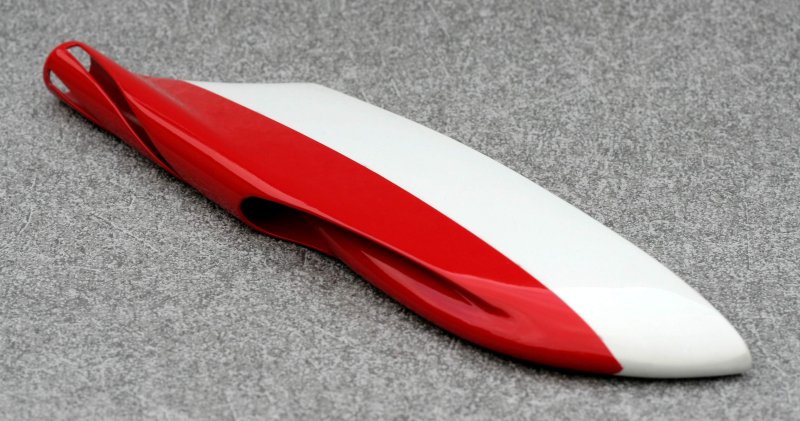
|
|
|||||||||||
I can assure you, this is not the name of this free software familiar to scientists whose name was created from a merger of two words: mph nimes and U/nix Andrew S. Tanenbaum, or even a new character's last film "Asterix /Obelix at the Olympic Games", but simply a contraction of three images:a minimum, "i", and "x". The "i" means induction, training of a fluid by another fluid commonly called vortex, The "x" is the drive letter of drag, resulting in this vortex, which opposes force in the advancement offset by traction / propulsion. In the case of an airplane, only the wings are affected by this problem (33% of the total drag) hand in the case of a wind turbine is the comprehensiveness of the blades is concerned. At last results: total aircraft 6%, 18% only wings aircraft and 14% for blades wind turbines. When you think vortex you always think of something very powerful like cyclones, hurricanes, storms, tornadoes and typhoons that are ravage wherever they go. In the field of water these are also commonly known as vortex whirls or malstroms sailors. All this boils down to whenever a vacuum is created especially in the air a few times it leaves indelible traces. The one who interests us is a vortex of the wing or blades manufactured by us. The creation of the marginal wing-tip vortex or blade is necessarily caused by three pressures. The first is the element in which the wing moves (air pressure local) the second and third are caused by the passage of the first on the top and underside of the wing (depression and overpressure) giving a lift with a positive incidence. As nature abhors a vacuum, these two pressures want to join because of opposite density and the fact that the wing ahead, "self-feeding" in a very dense spiral motion starting from the trailing edge, which then relaxes far downstream. The Minix has a cylindrical shape and compact whose entry to the leading edge resembles a goose feather cut. It is followed by slot (s) helical (s) along its entire length. With a little gross wing area (full surface in contact with the fluid), twice as light as a winglet, his attachment to the wing tip is very simple, inexpensive, and the total weight of its attachment added to the device should not exceed 1/3 of a fixation current standard. Given its shape, as compared to cutting efforts roll / yaw, slip, slide and other areas of flight, the reader will have no difficulty in understanding and imagining an airplane that would be equipped. The Minix becomes so important when we talk about pollution, safety or economy, in fact, currently the parking transport aircraft represents about 20,000 copies in the world, more than 2,5 billion passengers are planned in and 2010 on pollution, 8% of the world's oil consumption in 2006, multiplied by three gives you tonnes of CO2! A study was made by David Anderson, Director of Boeing commercial service, that is in gallons fuel per year, 1% drag on each type of aircraft group (conversion liters, tons and CO2 were calculated and then added for a better reality of pollution): BOEING 747 = 100.000 gallons = 378.541 litres = 302,8 T x 3,1 = 938,6 T de CO2 BOEING 777 = 70.000 gallons = 264.978 litres = 211,9 T x 3,1 = 656,8 T de CO2 BOEING 767 = 30.000 gallons = 113.562 litres = 90,8 T x 3,1 = 281,4 T de CO2 BOEING 757 = 25.000 gallons = 94.635 litres = 75,7 T x 3,1 = 234,6 T de CO2 BOEING 727 = 30.000 gallons = 113.562 litres = 90,8 T x 3,1 = 281,4 T de CO2 BOEING 737 = 15.000 gallons = 56.781 litres = 45,4 T x 3,1 = 140,7 T de CO2 According to the latest defence Aerospace & News Headlines "24300 planes add are expected by the next 20 years! Utopia! We can all increase… Except increase the diameter of our dear planet! The excitement of this machine to make money and make their flight hours begins to give vertigo. How do I solve this problem of unique demographics? Halting aerial traffic… It is almost impossible, the increasing curve is 5% cumulative annual and transportation by air has become commonplace. Side so much so that it is possible to make a trip to the other of Europe for only 30 €… How manufactures can use Minix technology for increasing energy output ? Taking the example of kerosene aircraft, the gain autonomy % = gain drag % for a parallel shift in relative wind ie that the aircraft moves by itself in a fluid air, almost inert. Wind is different, there is no relative wind, but a real wind blowing perpendicular to the wings (blades) and not parallel. In the first case the wind is relative while on the other the wind is active. In both cases we use profiles, either wing or blades with different equations but the result is the same: The drag is represented by a vortex and the Minix technology works the same way. The last Minix testing in March 2008 on a standard wind turbine gave very encouraging results. The old version gives 7 to 14% of earnings for low speeds at speeds of 10m/s. Recent improvements on the design are expected to reach nearly 20% gain max! The percentage gain with Minix on wind turbine blades is reflected in the following manner : - Economise material for the manufacture of the blades - Lower wind start up speed - Noise reduction - Energy efficiency constant throughout the year in proportion to the% gain. - Installation and selection of farms on site easier and more numerous - Reduction of noise levels for sea-life in the North Sea. - Legal issues reduced with ecologist associations - Installation of Minix can be done by "rétrofits", ie they can easily equip old wind turbines already on site, by sectioning off the tip. Bonn / Buenos Aires / Cape Town / Melbourne / New Delhi (WWEA) - Wind energy has continued its dynamic growth in the world in the year 2006. 14,900 MW have been added in the past year in summing up an installed capacity of 73,904 MW by the end of December 2006. The capacity is equivalent to adding a growth rate of 25%, compared with 24% in 2005. The currently installed wind capacity generates over 1% of world consumption of electricity. Based on the accelerated development, WWEA increased its forecast for 2010 and now expects to install 160000 MW by the end of 2010. 
The vortex in the air, cavitation in the water, 14 applications are possible with this technology. Minix can equip wind turbine submarine, rudders, stabilizers boat control surfaces depths submarines, the hydrofoils, the ailerons, the rotor system LIPP, ect… Minix also works on the race cars F1 reverse positioned at the front and rear wingtip, giving a lift and a contrary progress faster in proportion to its speed. The result is increased downforce for the car with less drag therefore faster.   Minix Cleantuesday Eolien par aciddtic21 Conference All Energy Show Aberdeen 2009 |
|||||||||||
|
Last update : Agust 11th 2019 666439 Visits since its creation | 5 connected  Recommend this page |
Recommend this page |  Print this page |
Print this page |  Top of the page
Top of the page
|